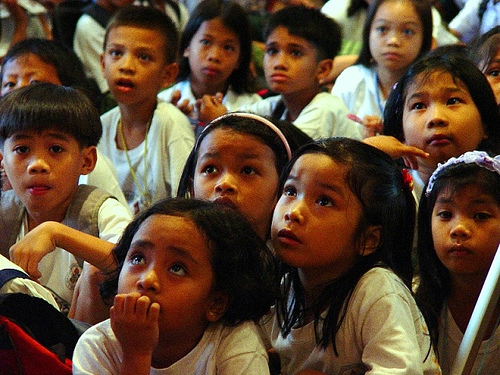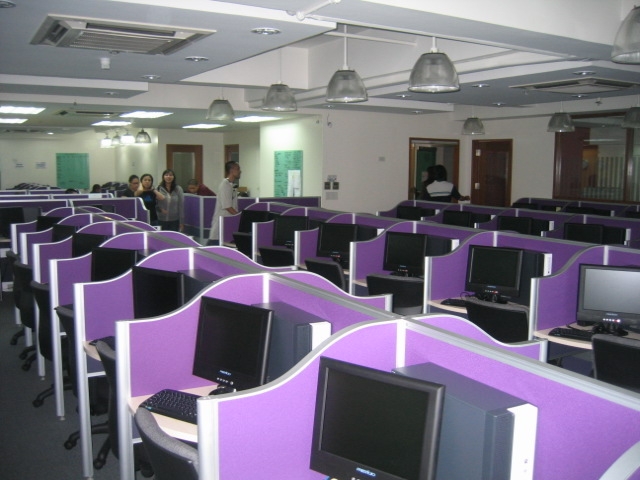 In this journal, I have discussed the relationship between education, poverty alleviation, and economic development. The link is critical and the three are self-reinforcing. Education creates greater opportunities for the youth, who go on to work decent jobs in cities like Bacolod, Manila, and Cebu. The children remit money back to the parents, who spend on home improvements and the tuition fees for the younger siblings. College-educated individuals are much less likely to end up impoverished (about 1 in 44). Trade schools also create opportunities, with only one in 10 people with post-secondary degrees living below the poverty line. Unfortunately, the ratios drop precipitously after that. One in three high school graduates and half of elementary school grads are impoverished. Here are the sobering education statistics: Continue reading
In this journal, I have discussed the relationship between education, poverty alleviation, and economic development. The link is critical and the three are self-reinforcing. Education creates greater opportunities for the youth, who go on to work decent jobs in cities like Bacolod, Manila, and Cebu. The children remit money back to the parents, who spend on home improvements and the tuition fees for the younger siblings. College-educated individuals are much less likely to end up impoverished (about 1 in 44). Trade schools also create opportunities, with only one in 10 people with post-secondary degrees living below the poverty line. Unfortunately, the ratios drop precipitously after that. One in three high school graduates and half of elementary school grads are impoverished. Here are the sobering education statistics: Continue reading
Category Archives: Development Economics
Green Products and the Triple Bottom Line
 The core philosophy of microfinance is the double bottom line. It refers to the goals of the organization, which are a) to be profitable, and b) to be socially impactful. But there is another philosophy known as the triple bottom line, which adds ecological impact. Sometimes referred to as “people, planet, profit,” TBL promotes an environmentally-friendly approach to development. To that end, there are a host of products that serve each of the three goals. In this post, I will talk about one in particular: environmental cookstoves. Continue reading
The core philosophy of microfinance is the double bottom line. It refers to the goals of the organization, which are a) to be profitable, and b) to be socially impactful. But there is another philosophy known as the triple bottom line, which adds ecological impact. Sometimes referred to as “people, planet, profit,” TBL promotes an environmentally-friendly approach to development. To that end, there are a host of products that serve each of the three goals. In this post, I will talk about one in particular: environmental cookstoves. Continue reading
She Drives a Dodge Stratus: The Role of the Husband
One of microfinance’s major achievements has been to empower women in societies that relegate women to a second-class status. At Negros Women for Tomorrow, 98% of clients are women. The rationale behind lending to women is that they are more reliable, family-oriented, and stationary. Women are more likely to spend the money on things like education and health care. One of the major themes of this blog is to highlight the interconnectedness of the impacts of microfinance. Giving women a livelihood pays dividends.
Empowering women to start a business not only gives them the respect that comes with being the breadwinner, but also makes them more influential in decisions made in the home and reduces their dependence on a partner. A widow that has relied on her husband will be reduced to poverty without grown children to support her. If having a large family was once a retirement plan, giving women a source of income could have positive ramifications for family planning. These are only a few of the examples of the benefits of empowering women. The effectiveness of microfinance at achieving this end is often disputed. In my experience, it is something very real and apparent. The degree to which microfinance has contributed is certainly open to debate. However, this post is not about women’s empowerment. It is about the role of the husband in making microfinance effective. Continue reading
Working Toward a Common Goal
 A microfinance institution is a business. Like any business, MFIs are competitive with one another. While MFIs currently serve only a portion of the poverty pie, they compete for existing clients. It is important to create a product that appeals to the client and offer high levels of service in order to keep your clients. This is particularly true in the Philippines, where things are relationship-driven and the people are emotional. For example, NWTF has an issue with client attrition because it sometimes has difficulty distributing new loans immediately after the old one has termed out. The women feel hurt and slighted when this happens, and drop out of the program as a result. In turn, they will join another MFI. That was a tangential anecdote to emphasize the competitive nature of this business. Yet this past week I attended a conference in Manila on “Operationalizing Social Performance Monitoring,” which highlighted the cooperative nature of microfinance institutions. It was hosted by the Microfinance Council of the Philippines and attended by MFIs from all across the country. Continue reading
A microfinance institution is a business. Like any business, MFIs are competitive with one another. While MFIs currently serve only a portion of the poverty pie, they compete for existing clients. It is important to create a product that appeals to the client and offer high levels of service in order to keep your clients. This is particularly true in the Philippines, where things are relationship-driven and the people are emotional. For example, NWTF has an issue with client attrition because it sometimes has difficulty distributing new loans immediately after the old one has termed out. The women feel hurt and slighted when this happens, and drop out of the program as a result. In turn, they will join another MFI. That was a tangential anecdote to emphasize the competitive nature of this business. Yet this past week I attended a conference in Manila on “Operationalizing Social Performance Monitoring,” which highlighted the cooperative nature of microfinance institutions. It was hosted by the Microfinance Council of the Philippines and attended by MFIs from all across the country. Continue reading
SMEs in the Philippines
This is the second post in a three-part series on SMEs.
In an earlier post, I discussed another area of development – SMEs – that is both important for creating sustained growth, and has recently attracted interest from investors. The Philippines is also placing a lot of emphasis on this area of development.
The Philippines is actually in good shape regarding SMEs, as it has an abundant labor pool. The country has 800,000 registered businesses, of which ~7% are classified as either small (10-99 employees, $60K to $300K in assets) or medium (100-199 employees, $300K to $2M in assets). Only 0.4% of the business earn above the $2M mark. The remaining 92% are microenterprises, which have between 1 and 9 employees and earn less than $60K in assets. These MSMEs (including microenterprises) account for 70% of the labor force and 30% of the output of the country.
Helping Haiti: Microfinance and Natural Disasters
What is the role of microfinance in the immediate aftermath of a natural disaster? The short answer is that, under the circumstances, microcredit is less effective. A prerequisite for microcredit is a functioning economy. Goods and services need to be worth money for capital infusions to make a difference. For example, an MFI lends money to a woman for the purpose of opening a general store. The woman uses the loan to buy soap from one retailer and soft drinks from another. She hires a local contractor to build the addition on her home, or at least purchases the materials. The money flows around community, and everyone becomes wealthier. But in the immediate aftermath of a natural disaster, the communities served by microfinance are so devastated that the system doesn’t work. There is no electricity, no fuel, no food, no water, and no shelter. Homes have been destroyed and people are starving. A sack of rice becomes invaluable – to a starving person, no amount of money would lead them to part with food. So it becomes a barter economy, if there is anything to barter at all. As with everything, these points are best illuminated by example. The most obvious is the recent earthquake in Haiti. In reality, Haiti needs aid money, and it needs aid workers to deliver services. Microfinance – microcredit, in particular – cannot immediately help during the relief period because there is no economy to stimulate. Continue reading
Life on the Farm: Micro-Crop Loans
This post appeared on the Kiva Fellows blog. Read the original here.
Last week I went to a town called La Castellana about an hour south of Bacolod to visit the NWTF branch there. I was there to meet a handful of Kiva borrowers and interview them about the progress of their loan. Over the course of two days, I met six women that currently have a loan with Kiva, and another four that I am going to post to the site this week. La Castellana is a town in the mountains that is largely supported by agriculture. It is also one of the major areas impacted by agrarian reform and home to some of NWTF’s poorest clients.
The Philippines is a country of ~90 million people, half of whom live in rural areas. Eighty percent (80%) of Filipinos living below the poverty line are in rural communities, supported primarily by agriculture. Over the past three decades, agricultural land ownership in the Philippines underwent a transformation via a series of legislation known as Comprehensive Agrarian Reform Program (CARP) passed in 1988. Designed to provide landless farm workers a piece of land, the program has redistributed farmland in 1.1-hectare units. It is a controversial topic, and its effectiveness at combating poverty is debatable. Regardless of whether or not CARP has worked, the ARBs (Agrarian Reform Beneficiaries) – the recipients of the farmland – are the poorest of the poor. In Negros alone, there are 112,000 ARBs working 170,00 hectares. There are no economies of scale on a one-hectare farm. Fertilizer, farming equipment and labor are expensive, and they don’t have the capital. The average land tract size for ARBs in Negros is 1.25 hectares, with input costs of 35,000 pesos (~$800 USD) per hectare. The government gave them land but failed to provide adequate funding, agricultural training, or meaningful support. In many ways, the cards are stacked against them. So, unable to make ends meet, many just rent or sell their land back to the owner. It is a vicious cycle, but microfinance can offer a solution. Continue reading
Continue reading
Mass Weddings for the Poor
The following was written for the Kiva Fellows blog. Read the original here.
 This job is unique, in that it offers an endless supply of intellectual satisfaction. Every day, I learn something new about something interesting. For the time being, what interests me most is microfinance. My knowledge of microfinance prior to Kiva could be described as purely academic. Experiencing it firsthand has been rewarding. In particular, I like understanding the details of execution, the challenges faced by the institution, and generally how a microfinance institution works. The amount of information to digest is enormous, so I try to focus on understanding a few NWTF (Negros Women for Tomorrow) programs that I think are in my wheelhouse. The downside is that I end up overlooking many fascinating and unambiguously positive programs. The other day my coworkers were telling me about the upcoming Foundation day at one of the branches. Every year, each branch that meets a certain threshold of repayment and performance can have a Foundation Day party with upwards of 2,000 attendees. I was supposed to go to one in Cauyaun on Saturday, but I got food poisoning the day before and was bedridden. At some of the Foundation Day celebrations, NWTF holds a mass wedding. This is one of those programs that I find really interesting for different reasons. Let me explain why. Continue reading
This job is unique, in that it offers an endless supply of intellectual satisfaction. Every day, I learn something new about something interesting. For the time being, what interests me most is microfinance. My knowledge of microfinance prior to Kiva could be described as purely academic. Experiencing it firsthand has been rewarding. In particular, I like understanding the details of execution, the challenges faced by the institution, and generally how a microfinance institution works. The amount of information to digest is enormous, so I try to focus on understanding a few NWTF (Negros Women for Tomorrow) programs that I think are in my wheelhouse. The downside is that I end up overlooking many fascinating and unambiguously positive programs. The other day my coworkers were telling me about the upcoming Foundation day at one of the branches. Every year, each branch that meets a certain threshold of repayment and performance can have a Foundation Day party with upwards of 2,000 attendees. I was supposed to go to one in Cauyaun on Saturday, but I got food poisoning the day before and was bedridden. At some of the Foundation Day celebrations, NWTF holds a mass wedding. This is one of those programs that I find really interesting for different reasons. Let me explain why. Continue reading
Hapinoy
 Here in the Philippines, the most common use for a microloan is a sari-sari store – otherwise known as a general or convenience store. There are an estimated 700,000 of them here, and you can find one on just about every block in the country. In 2007, an organization called Microventures Incorporated introduced its Hapinoy program, which is a coop of sari sari stores across the country. By joining together, these stores can get leverage economies of scale to get volume discounts, competitive pricing, and more favorable terms for microloans. The organization purchases products in bulk from Procter & Gamble and other large manufacturers, and distributes them to each Hapinoy store via a community store. It is a hub-and-spoke model with a wholesale store serving different regions. Here is a program that operates within the existing framework of the country, improving what exists, rather than trying to change it altogether. Continue reading
Here in the Philippines, the most common use for a microloan is a sari-sari store – otherwise known as a general or convenience store. There are an estimated 700,000 of them here, and you can find one on just about every block in the country. In 2007, an organization called Microventures Incorporated introduced its Hapinoy program, which is a coop of sari sari stores across the country. By joining together, these stores can get leverage economies of scale to get volume discounts, competitive pricing, and more favorable terms for microloans. The organization purchases products in bulk from Procter & Gamble and other large manufacturers, and distributes them to each Hapinoy store via a community store. It is a hub-and-spoke model with a wholesale store serving different regions. Here is a program that operates within the existing framework of the country, improving what exists, rather than trying to change it altogether. Continue reading
Another Approach: Investing in SMEs
This is the first in a three-part series about small- and medium-sized enterprises
In March of 2008, James Surowiecki wrote an article for the New Yorker, titled “What Microloans Miss,” that suggests that the disproportionate amount of attention given to microfinance has steered funding away from other avenues for development. A year and a half later, the Boston Globe included a piece on two recent studies on microfinance questioning its efficacy, titled “Small Change.” Both articles revolve around the same central premise: microfinance, while effective at relieving some of the burdens of day-to-day living, does not create jobs. It is rare that a microbusiness receiving a loan has paid employees. In other words, microloans allow women to start a business, but more independent businesses do not help to alleviate poverty on a macro (national) scale. Small- and medium-sized enterprises (SMEs), according to Surowiecki, are the engines of development. Here he discusses what considers to be the problem of the cult of microfinance:
Both socially and economically, microloans do a lot of good, working what Boudreaux and Cowen call “Micromagic.” But the overselling of their promise has made us neglect the enterprises that could be real engines of macromagic. The cult of the entrepreneur that the microfinance boom has helped foster is understandably appealing. But thinking that everyone is, and should be, an entrepreneur leads us to underrate the virtues of larger businesses and of the income that a steady job can provide. To be sure, for some people the best route out of poverty will be a bank loan. But for most it’s going to be something much simpler: a regular paycheck.
The benefits of increasing support for SMEs in a country are real and quantifiable. Consolidation into the formal sector provides more people with steady jobs and offers workers better health and wage benefits, disability, pensions, etc. These businesses help to reduce the size of black markets and generate taxable income. What’s more, a majority of microentrepreneurs would prefer a steady paycheck with job security to their current situation. I don’t disagree with the idea that vehicles of mass production – a factory, or a plant, or a farm – create strong upward momentum for poorer people without employment. But every country has a different profile, and the success of the development approach depends on the different strategies of development.




